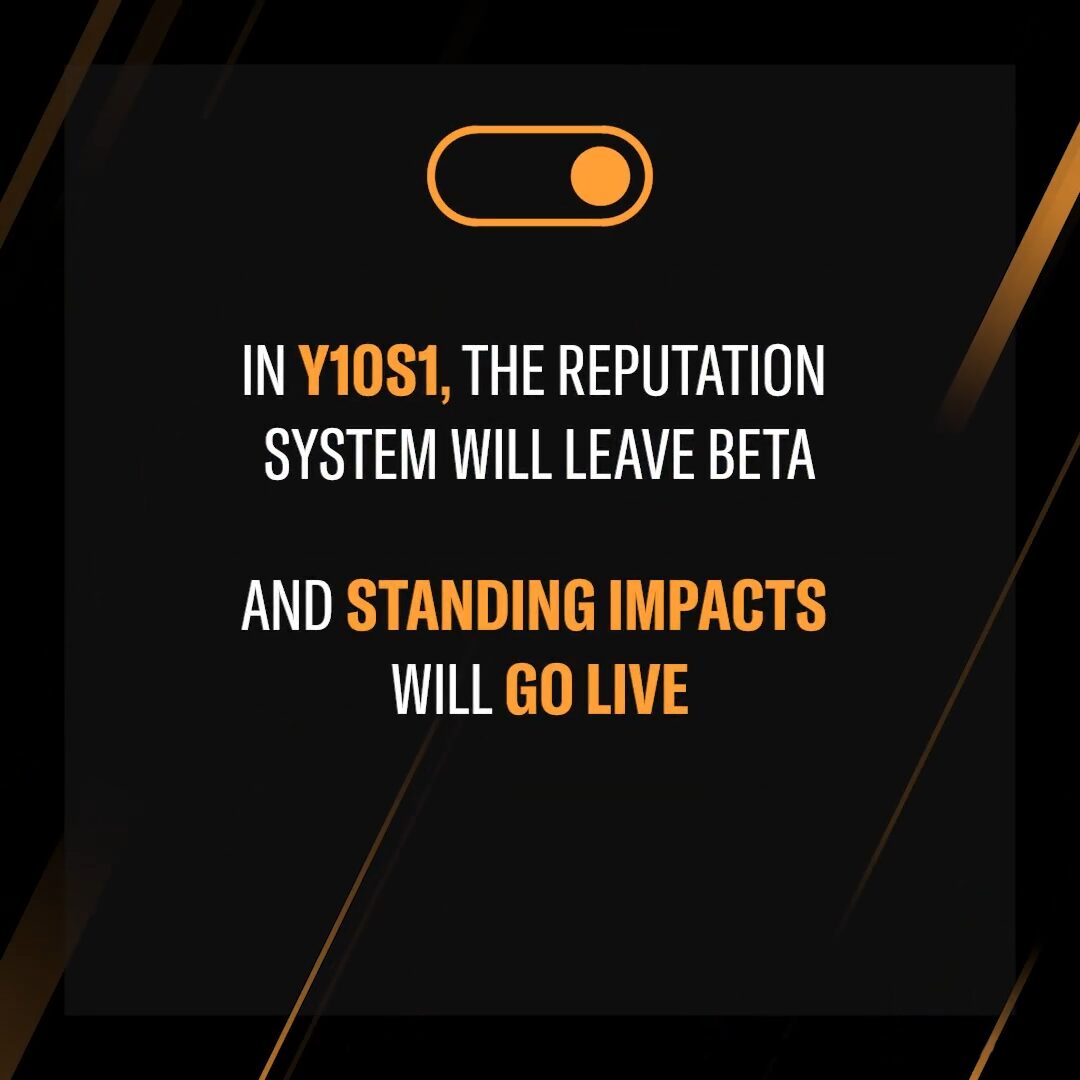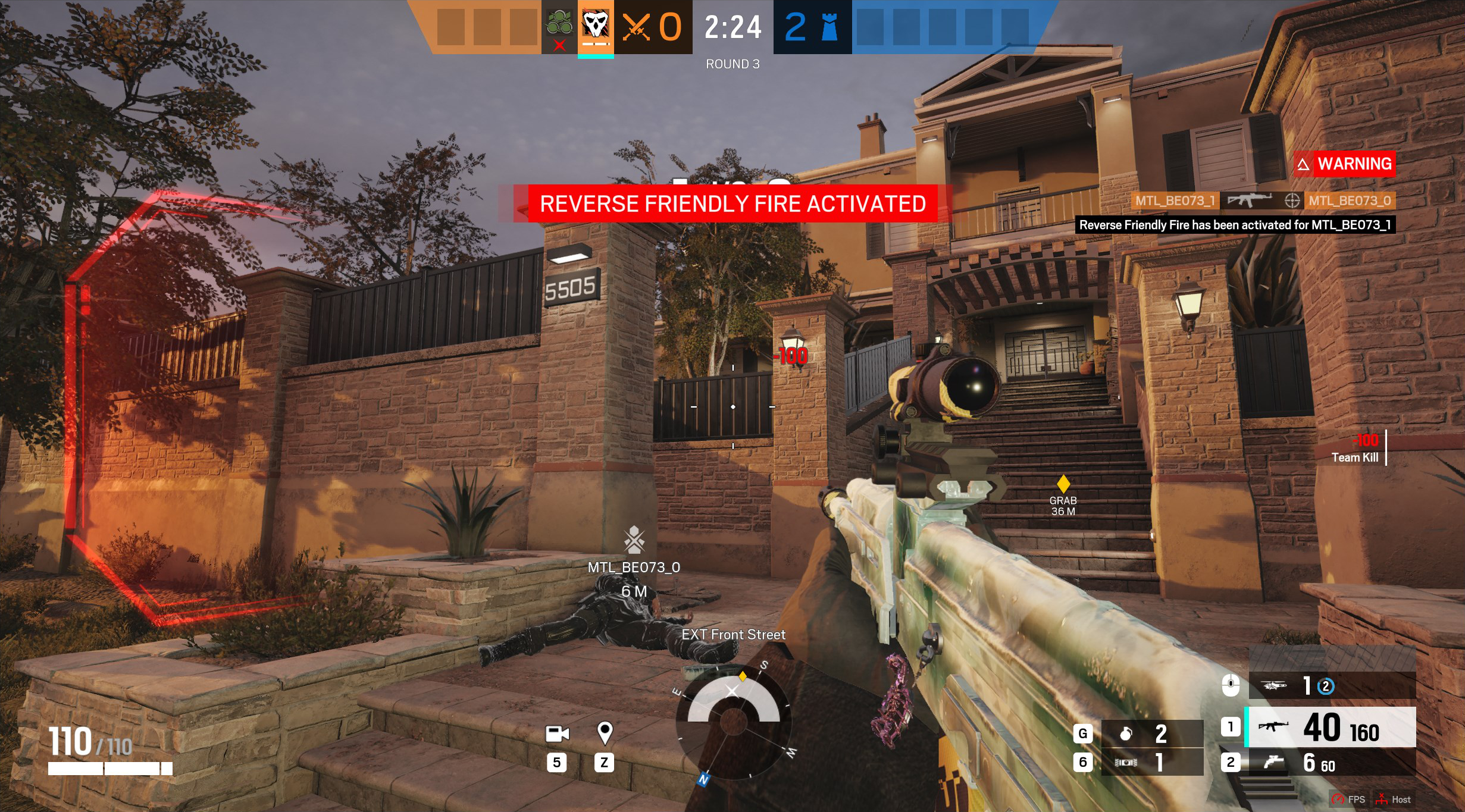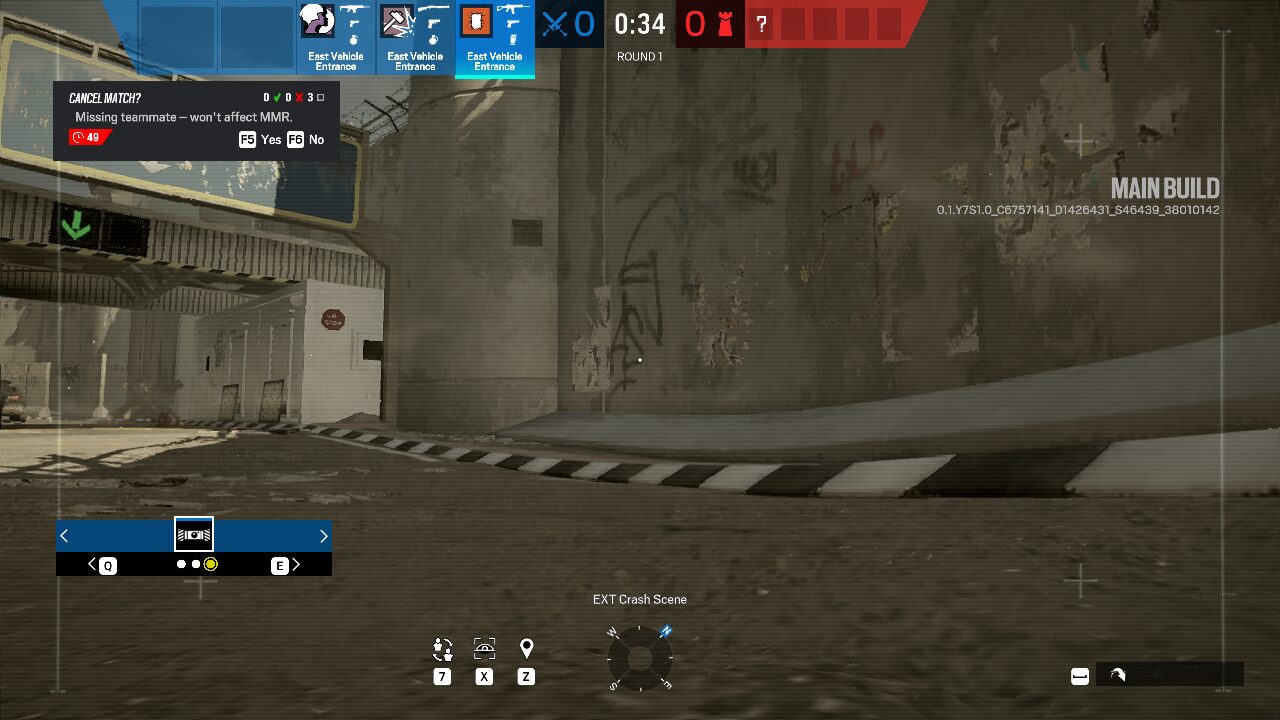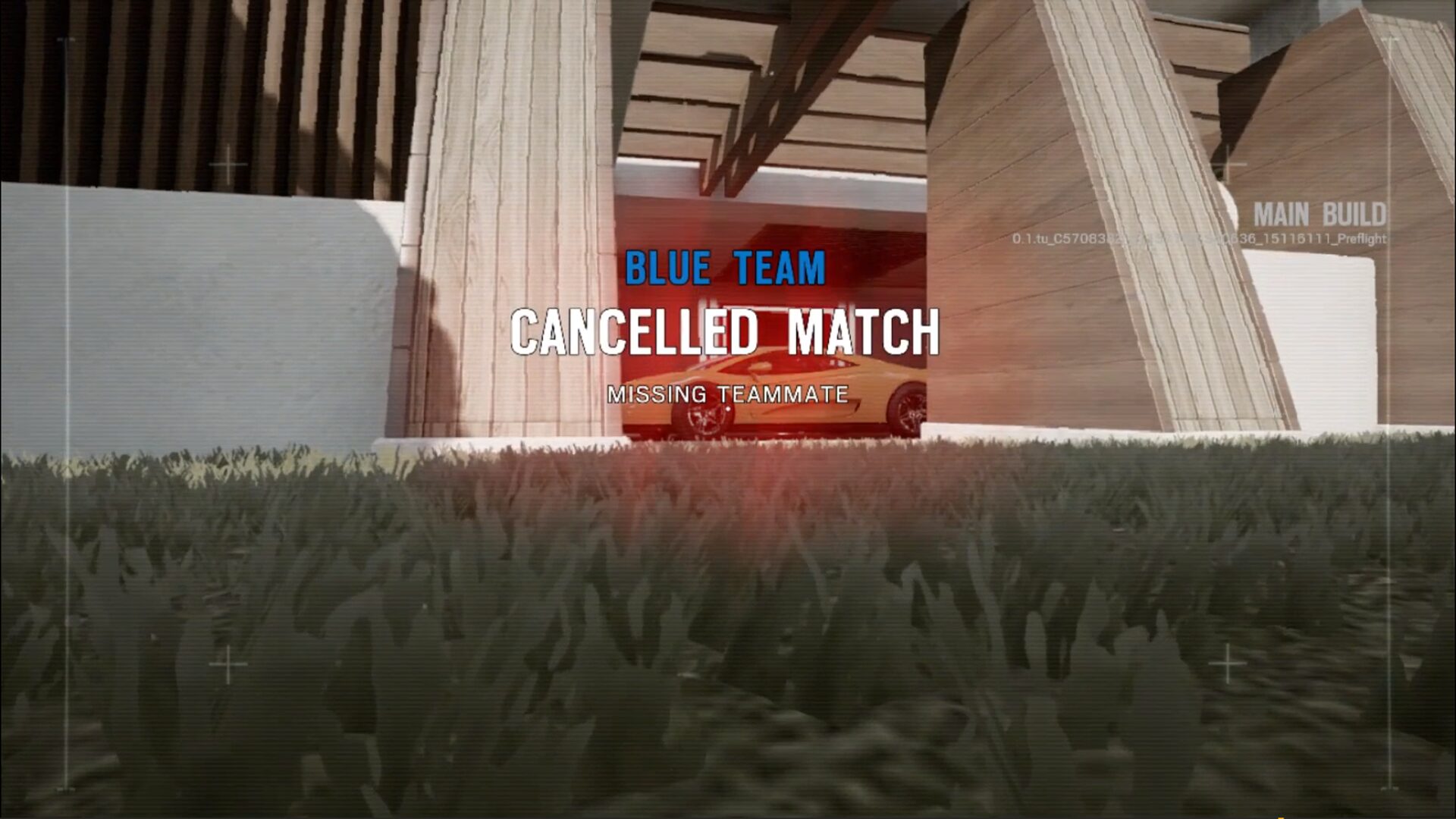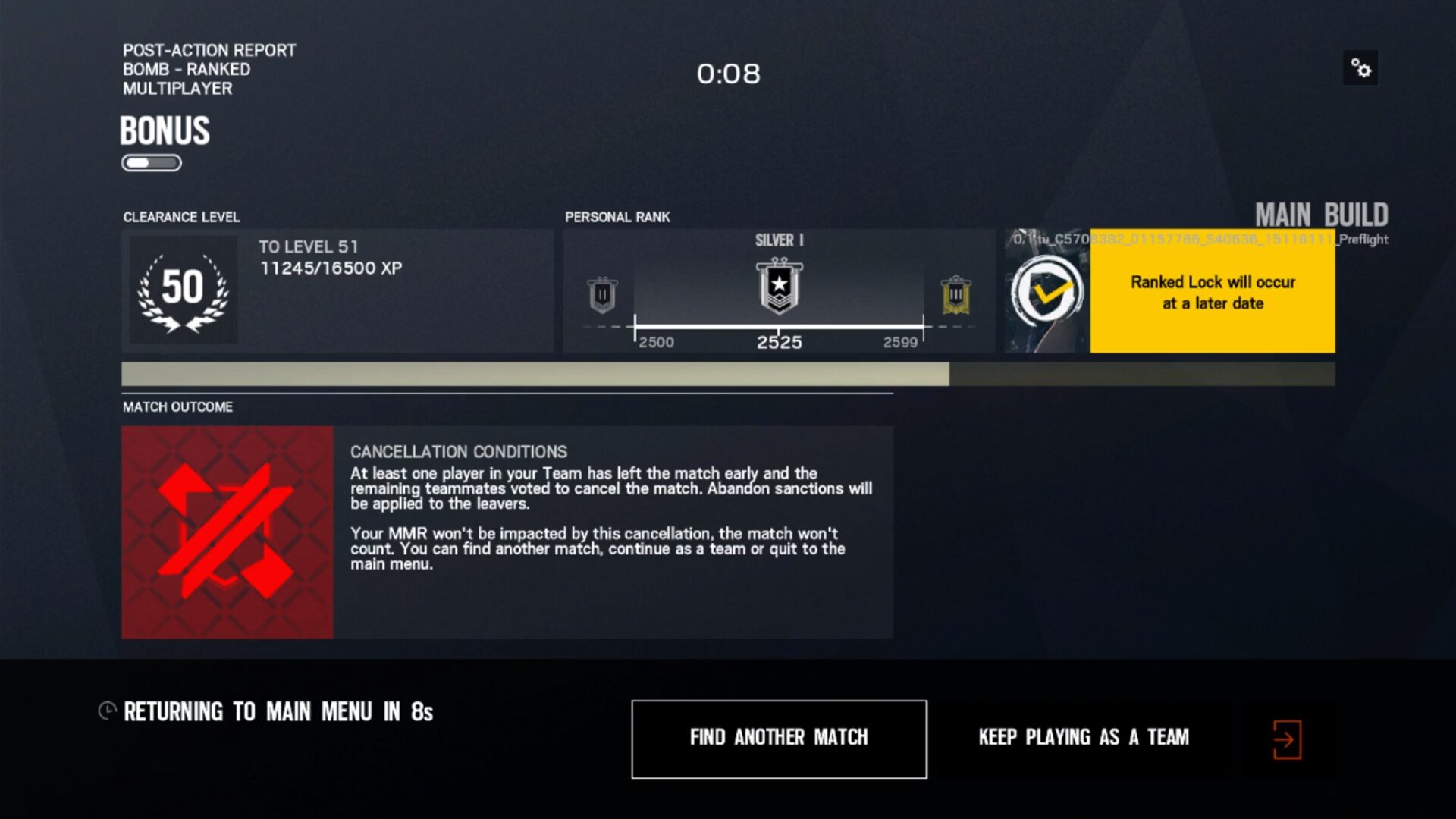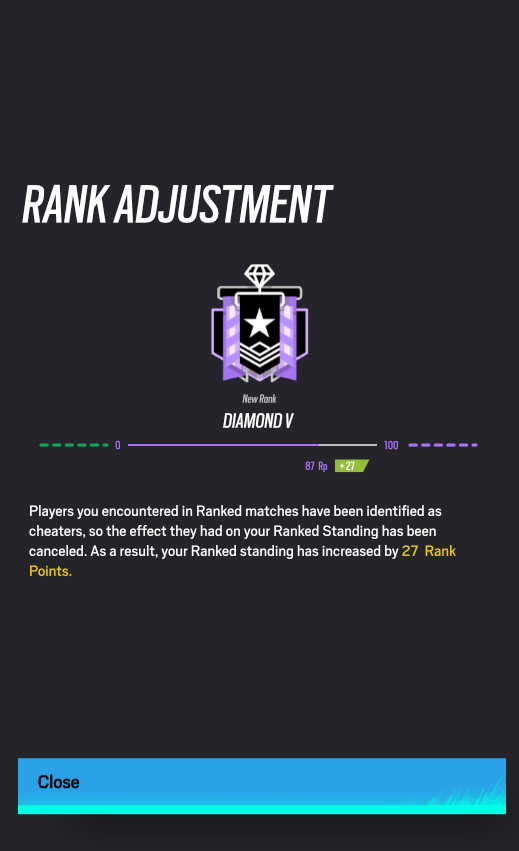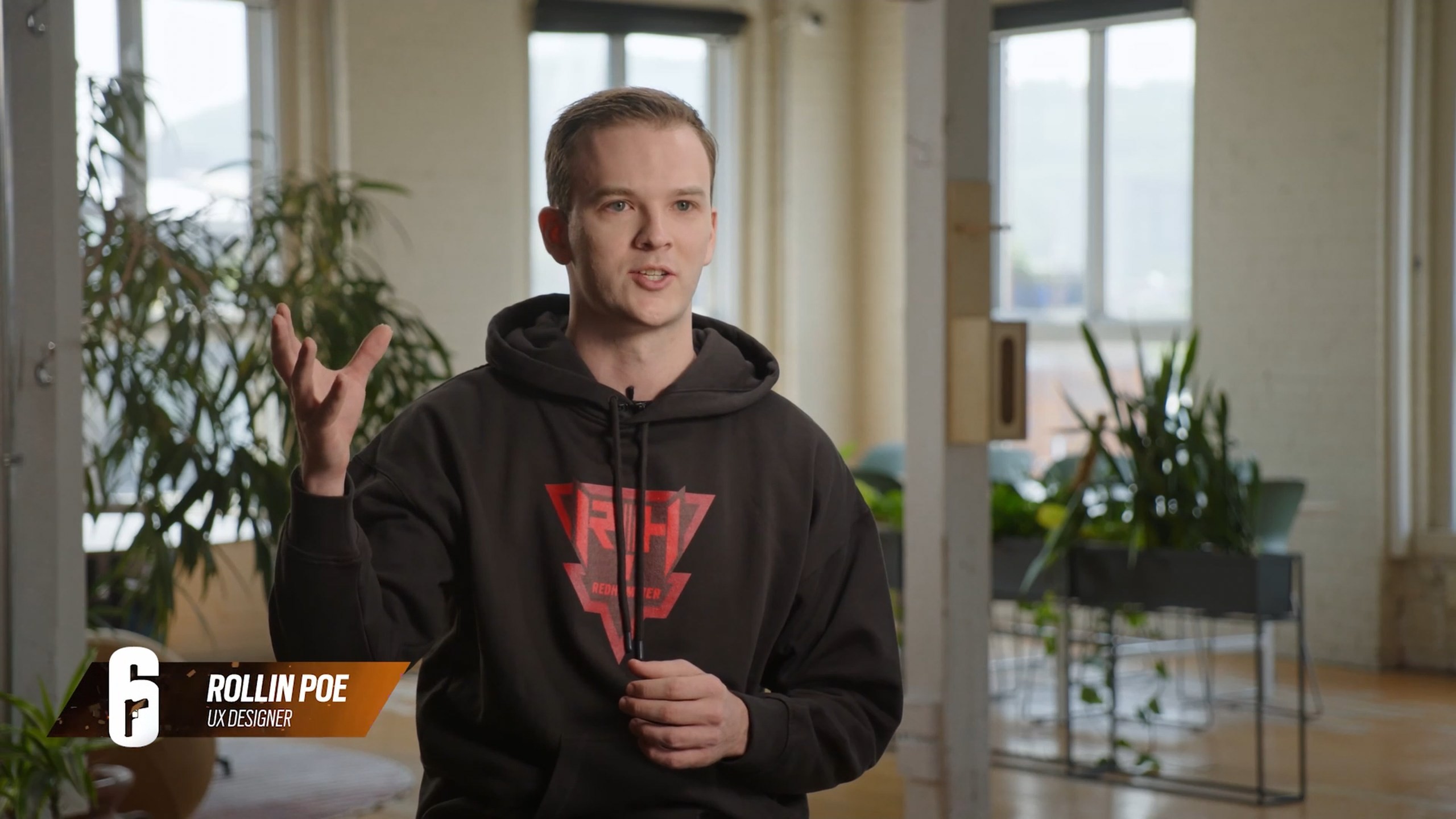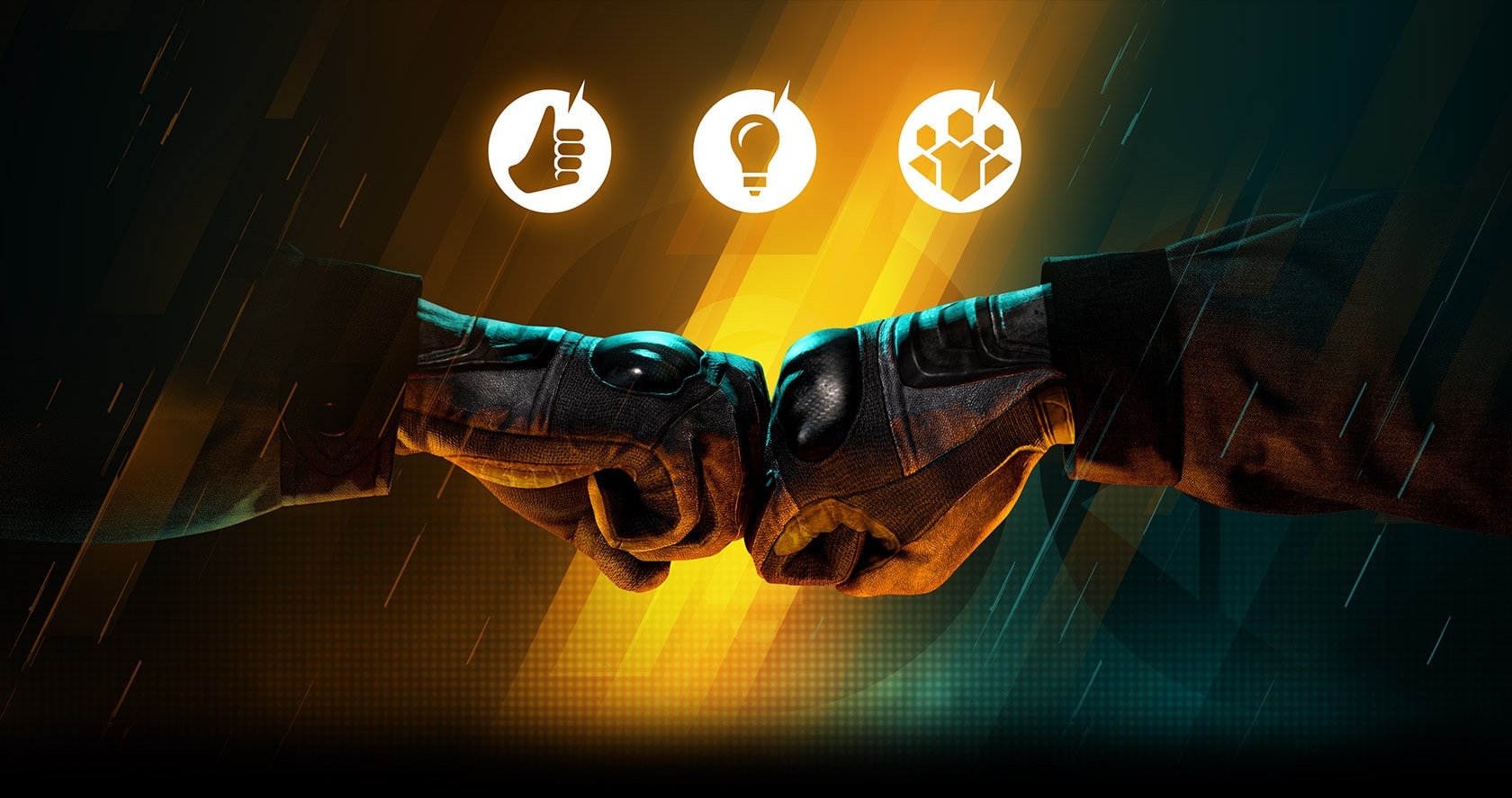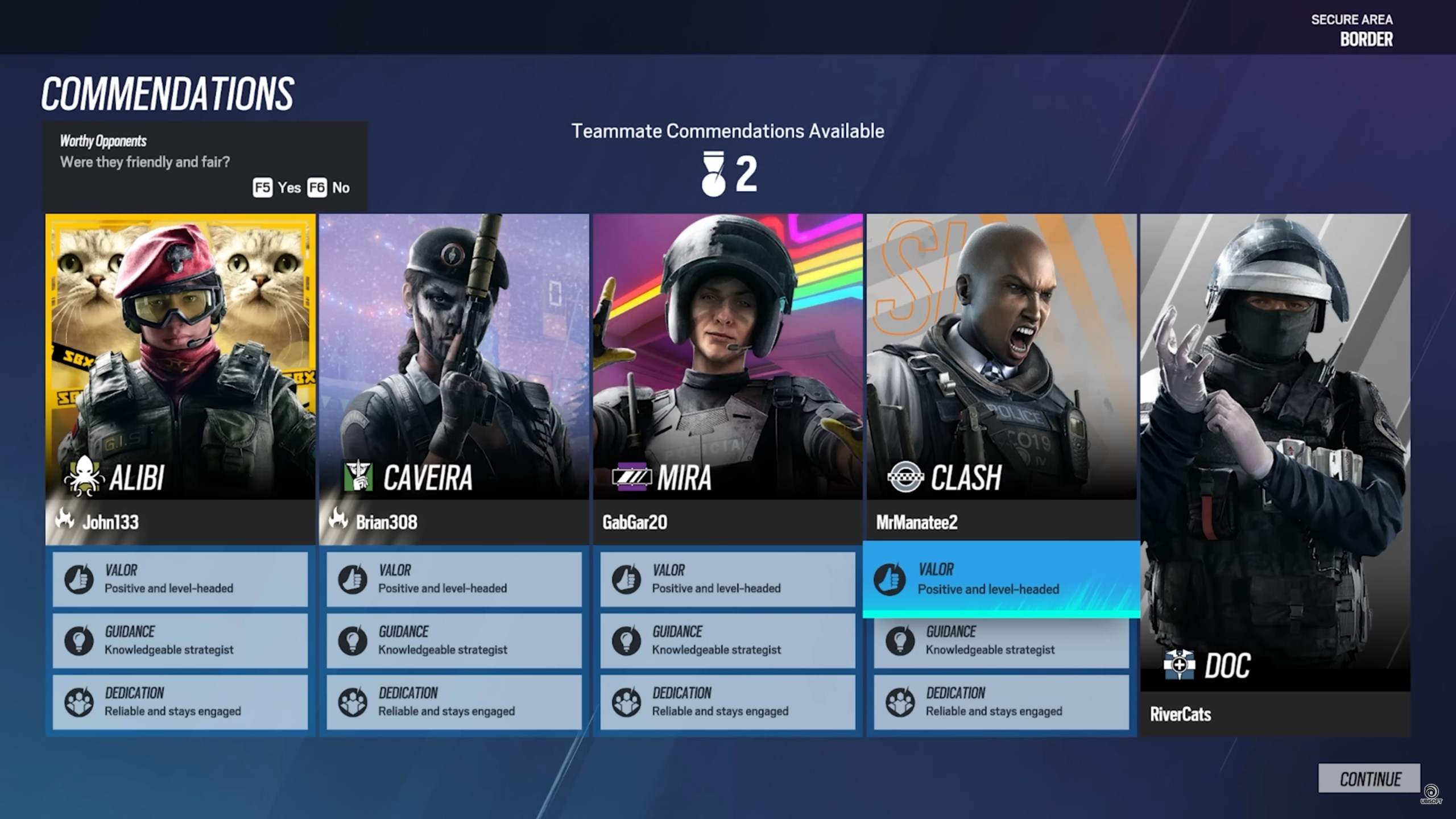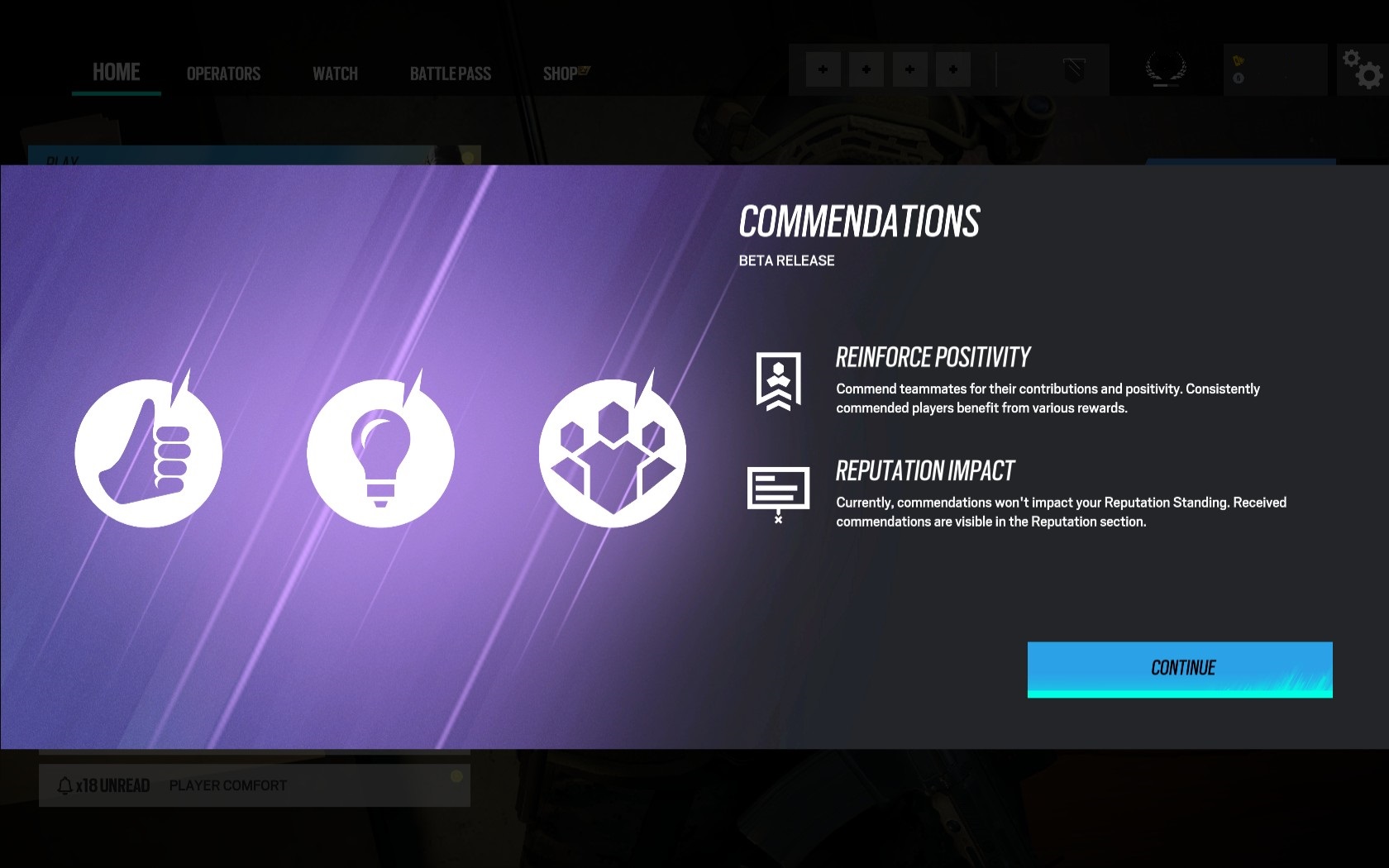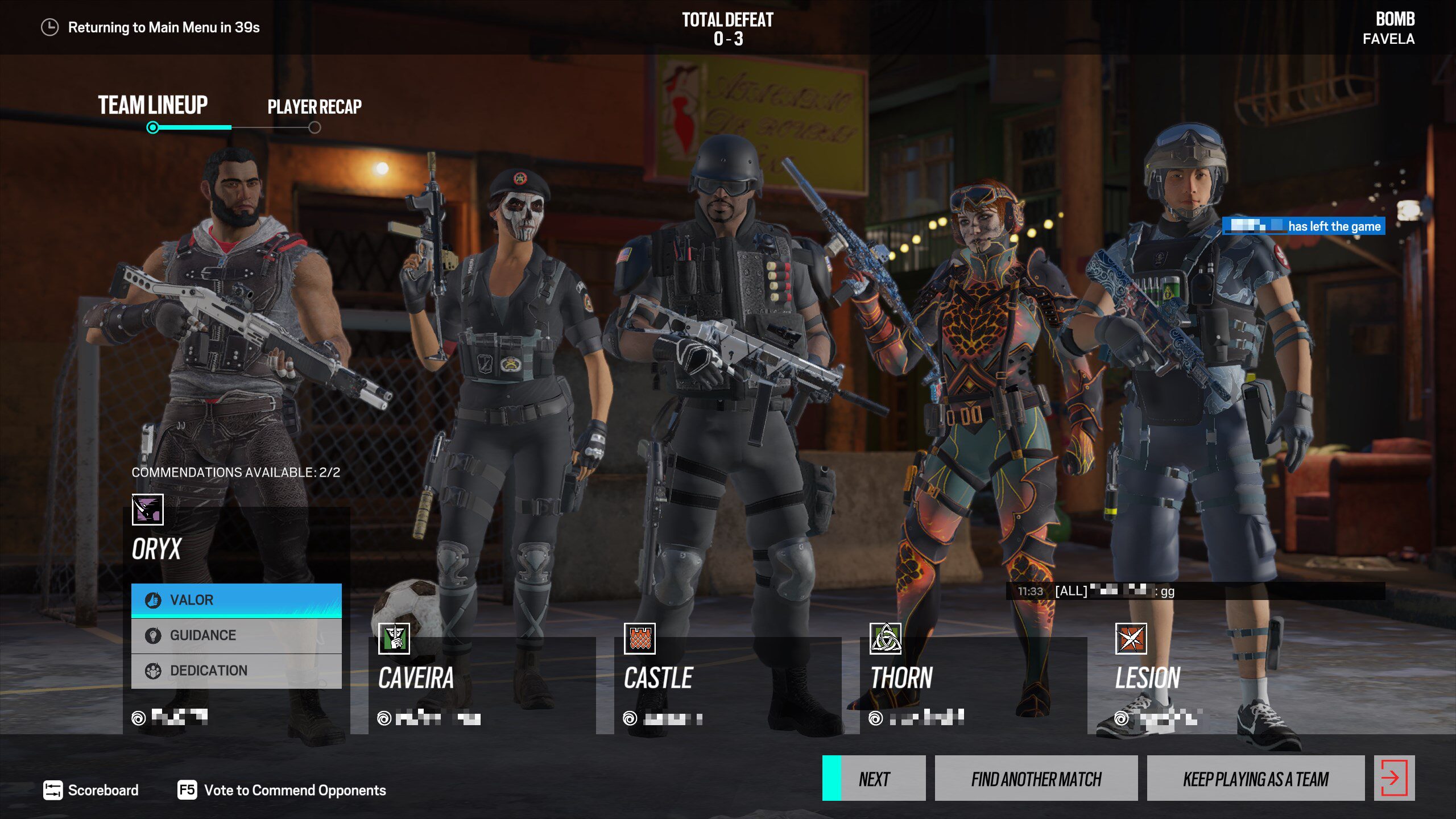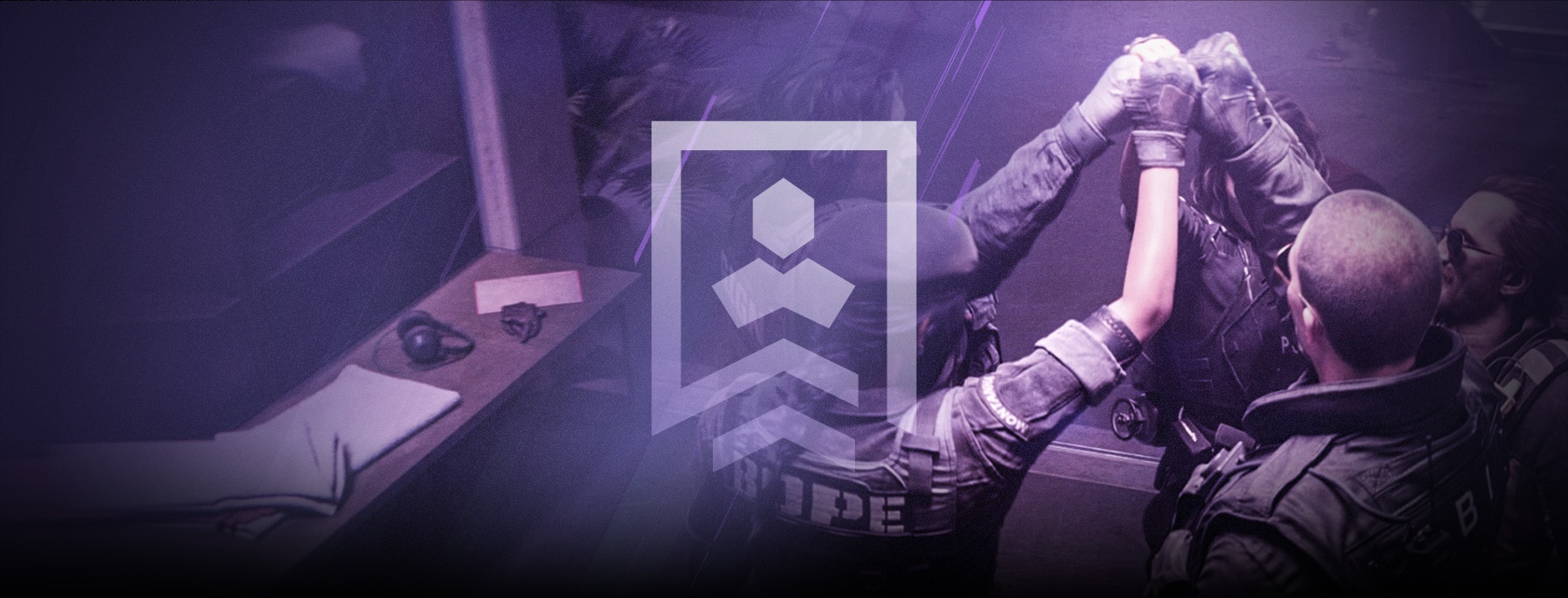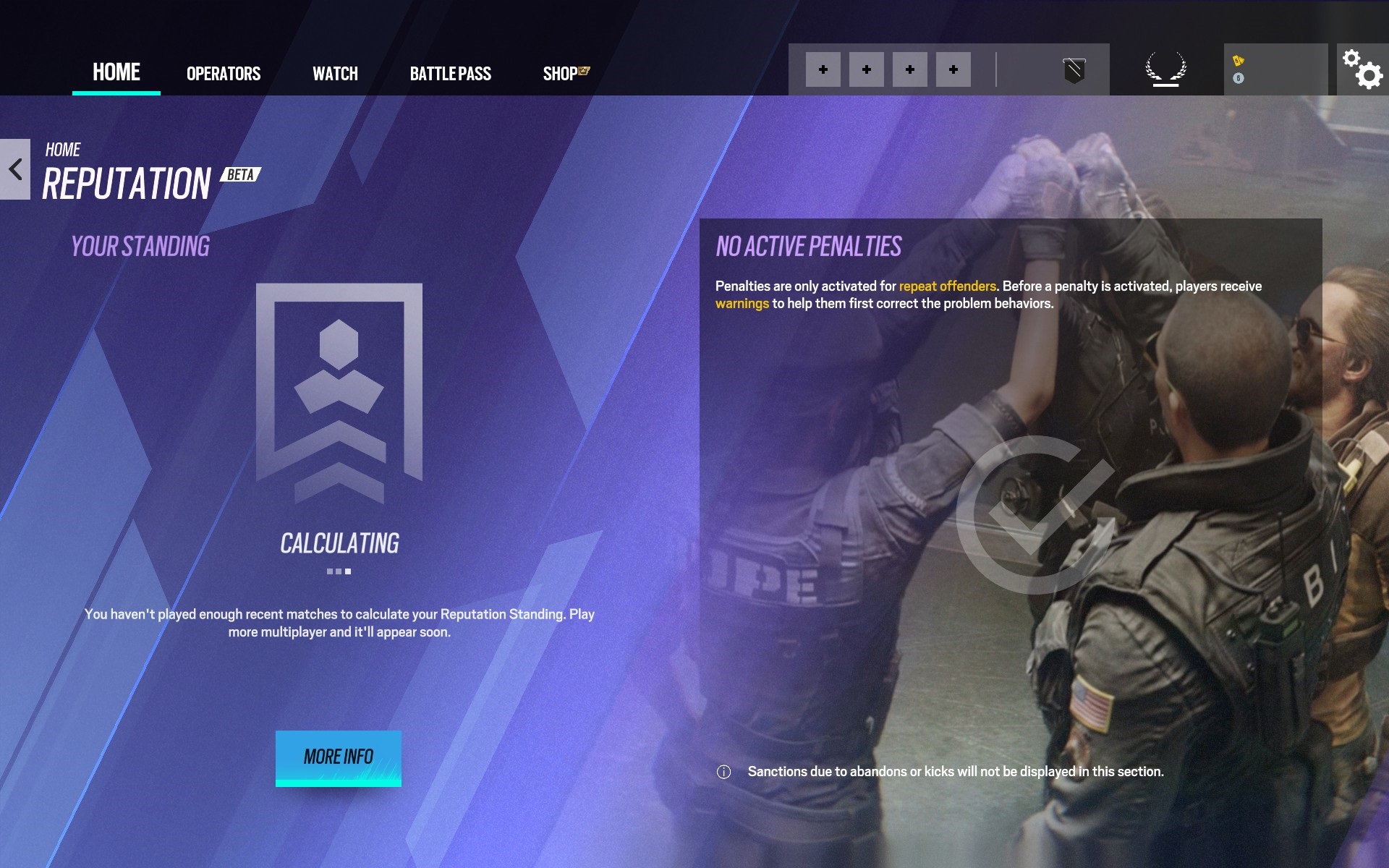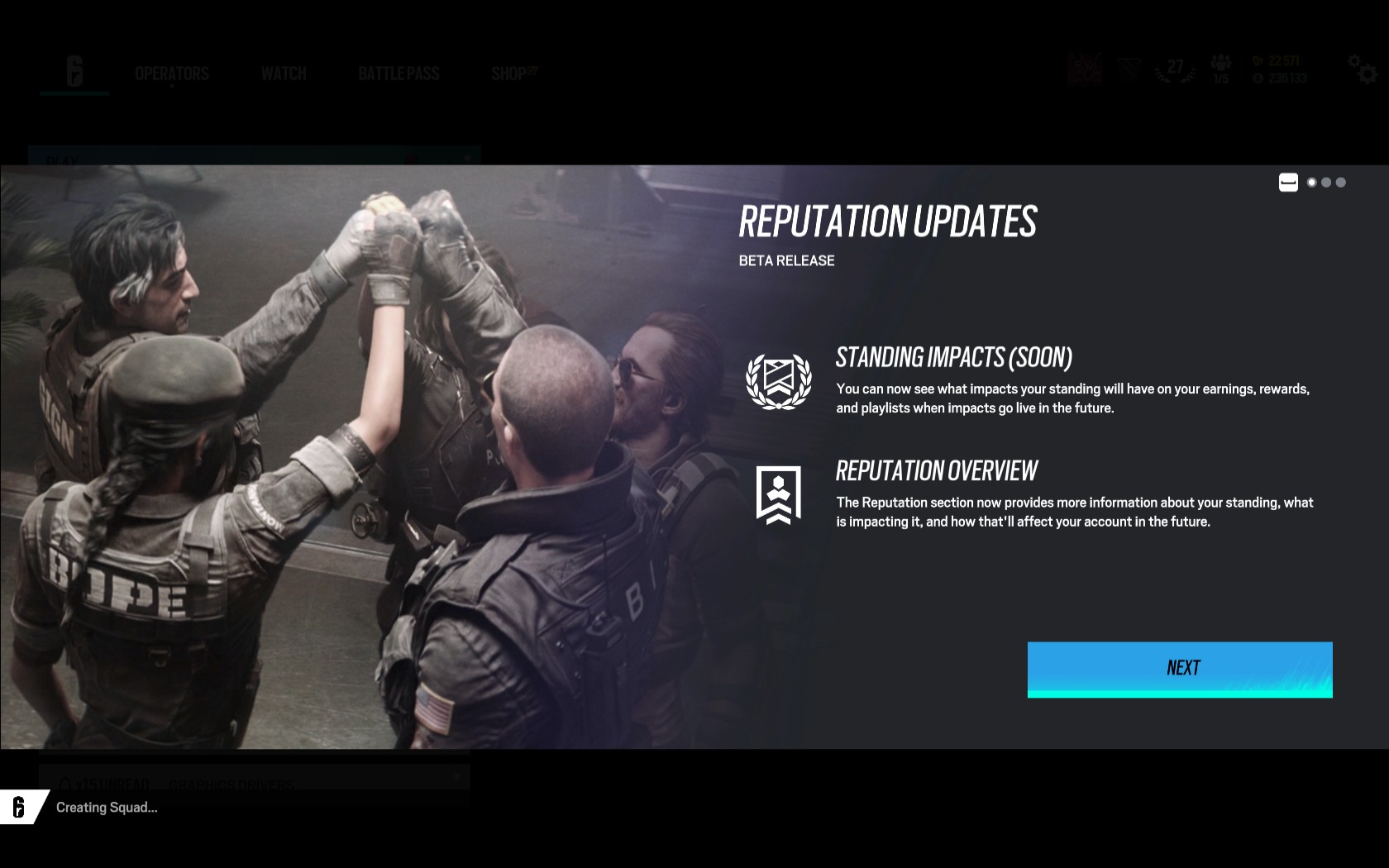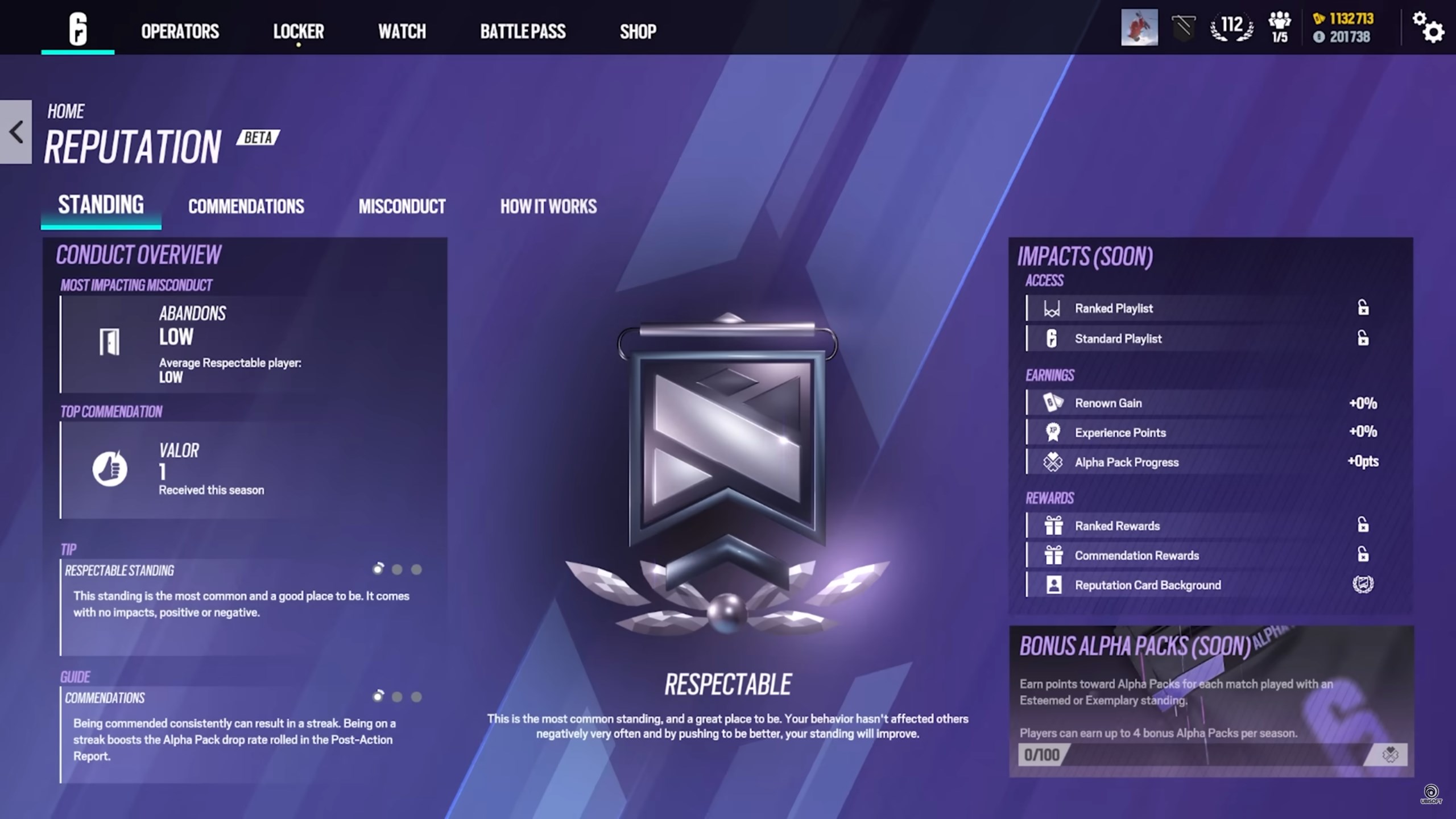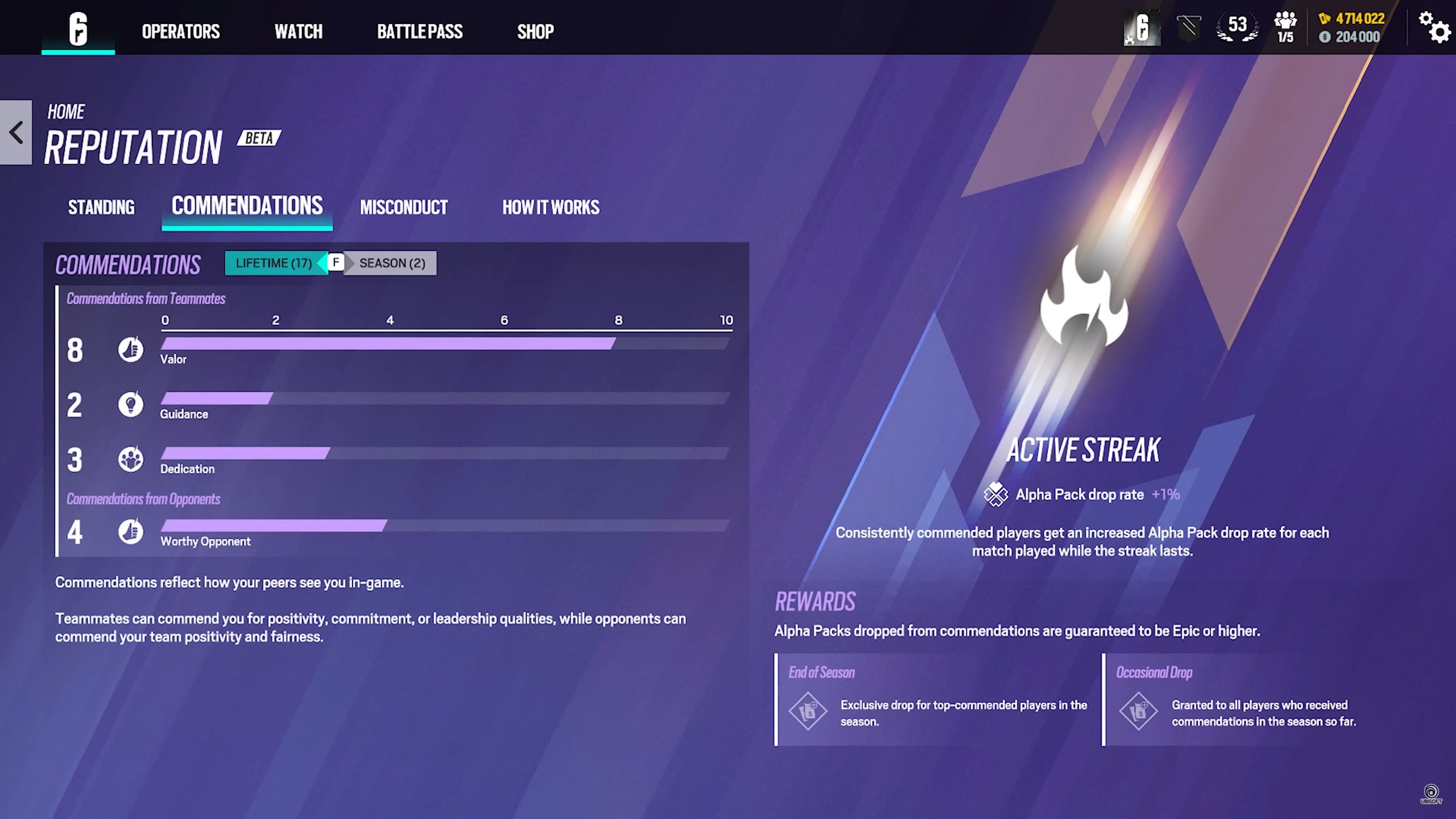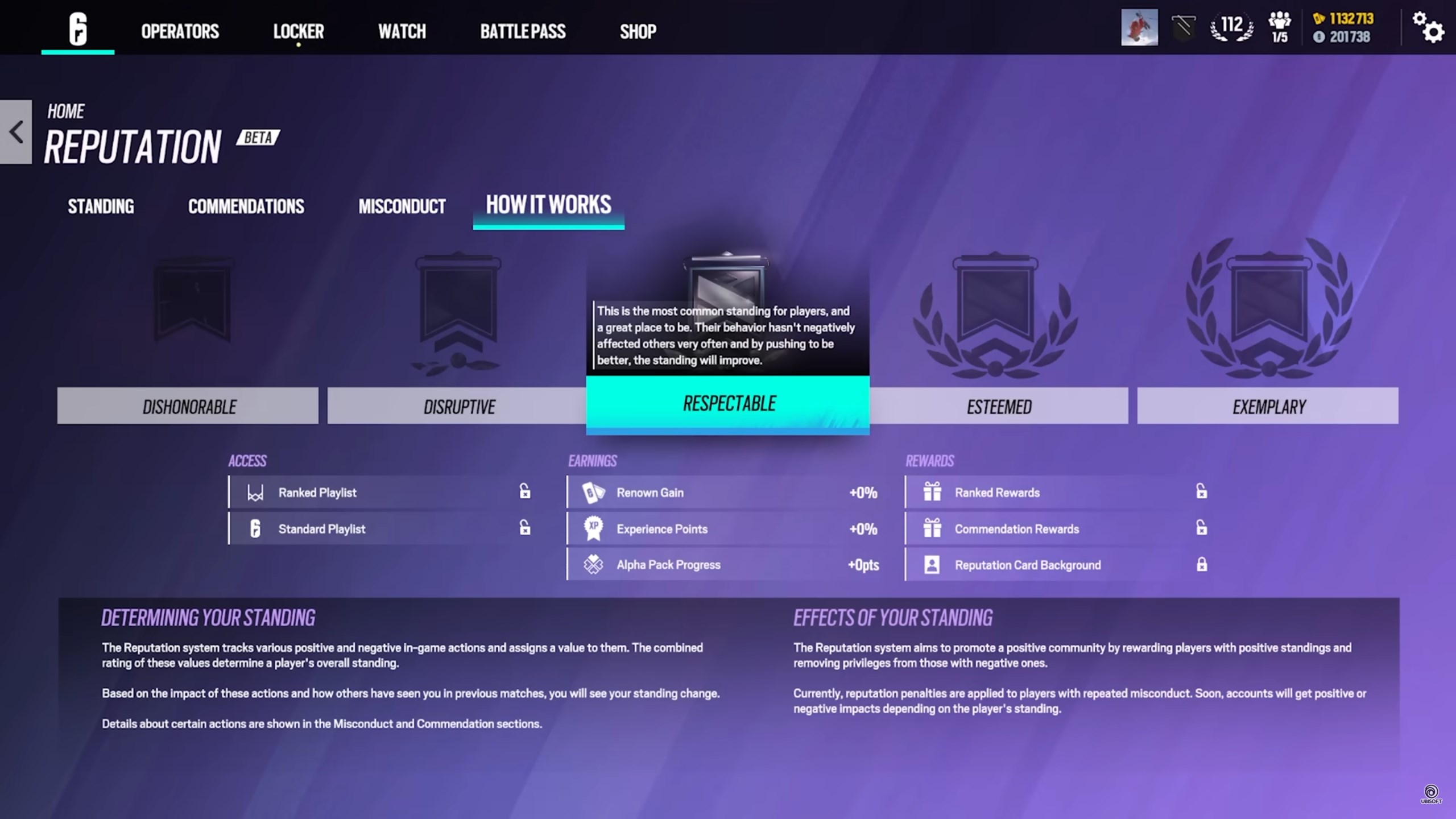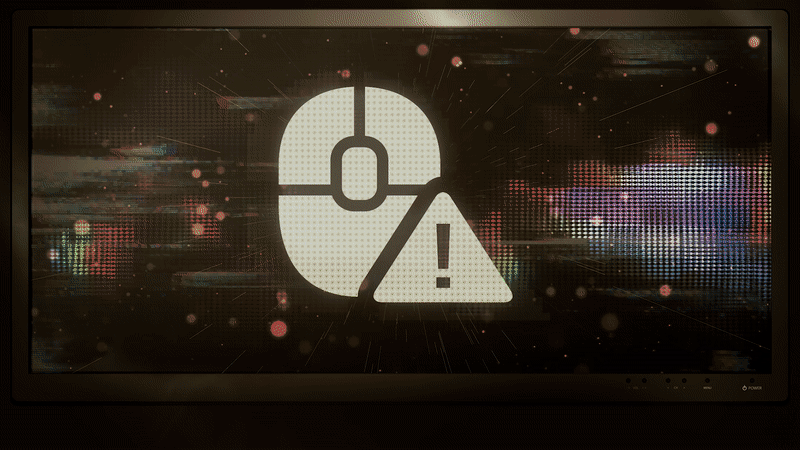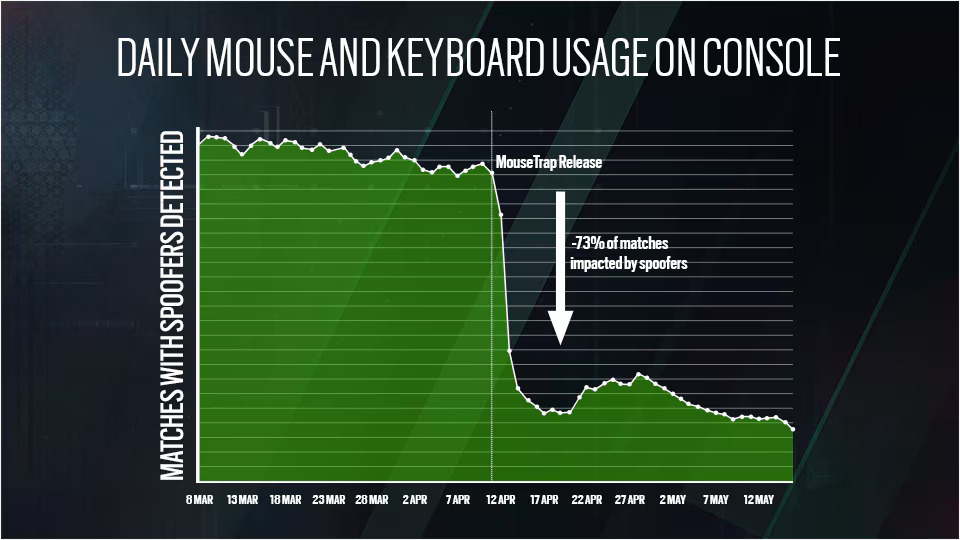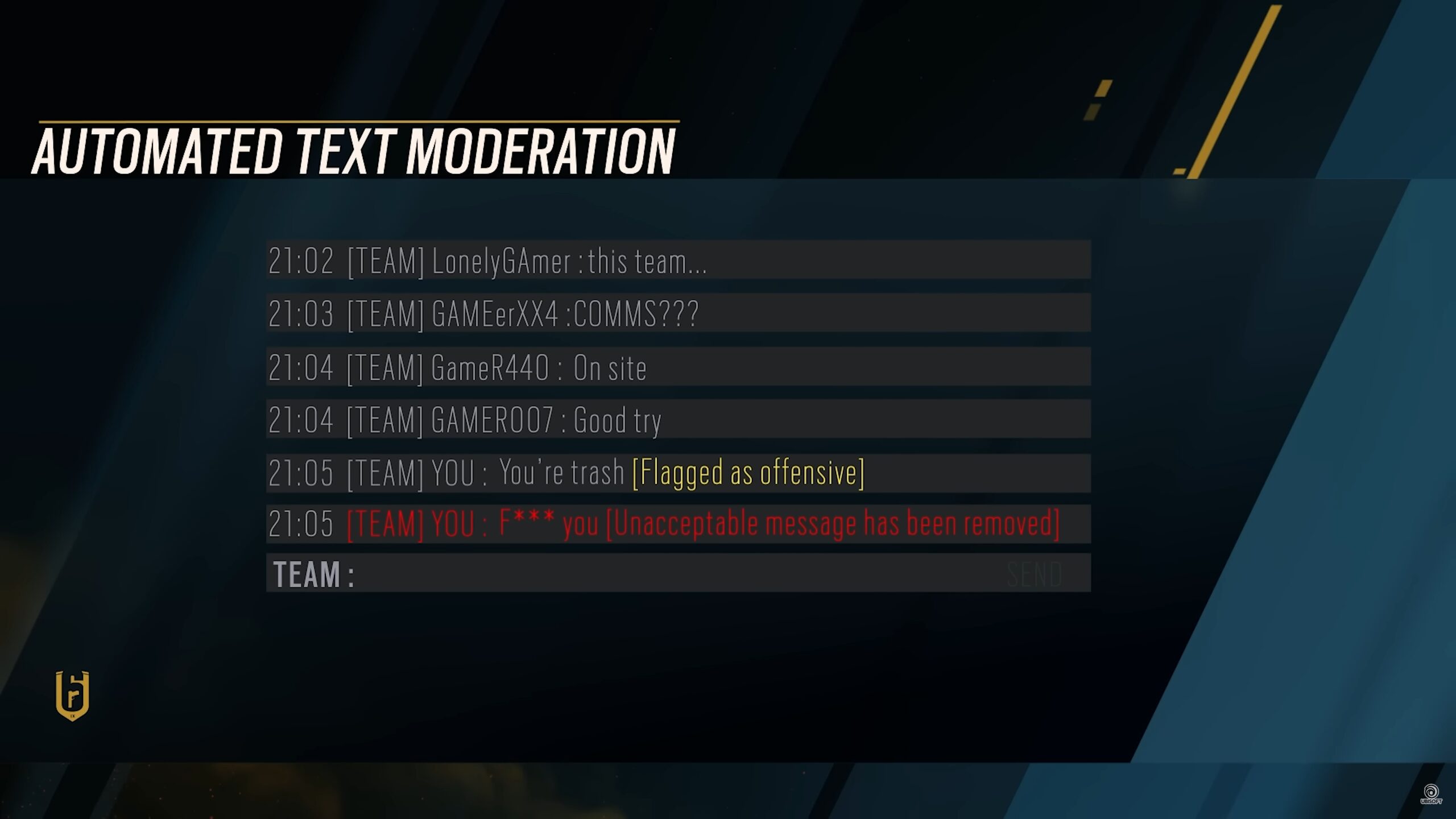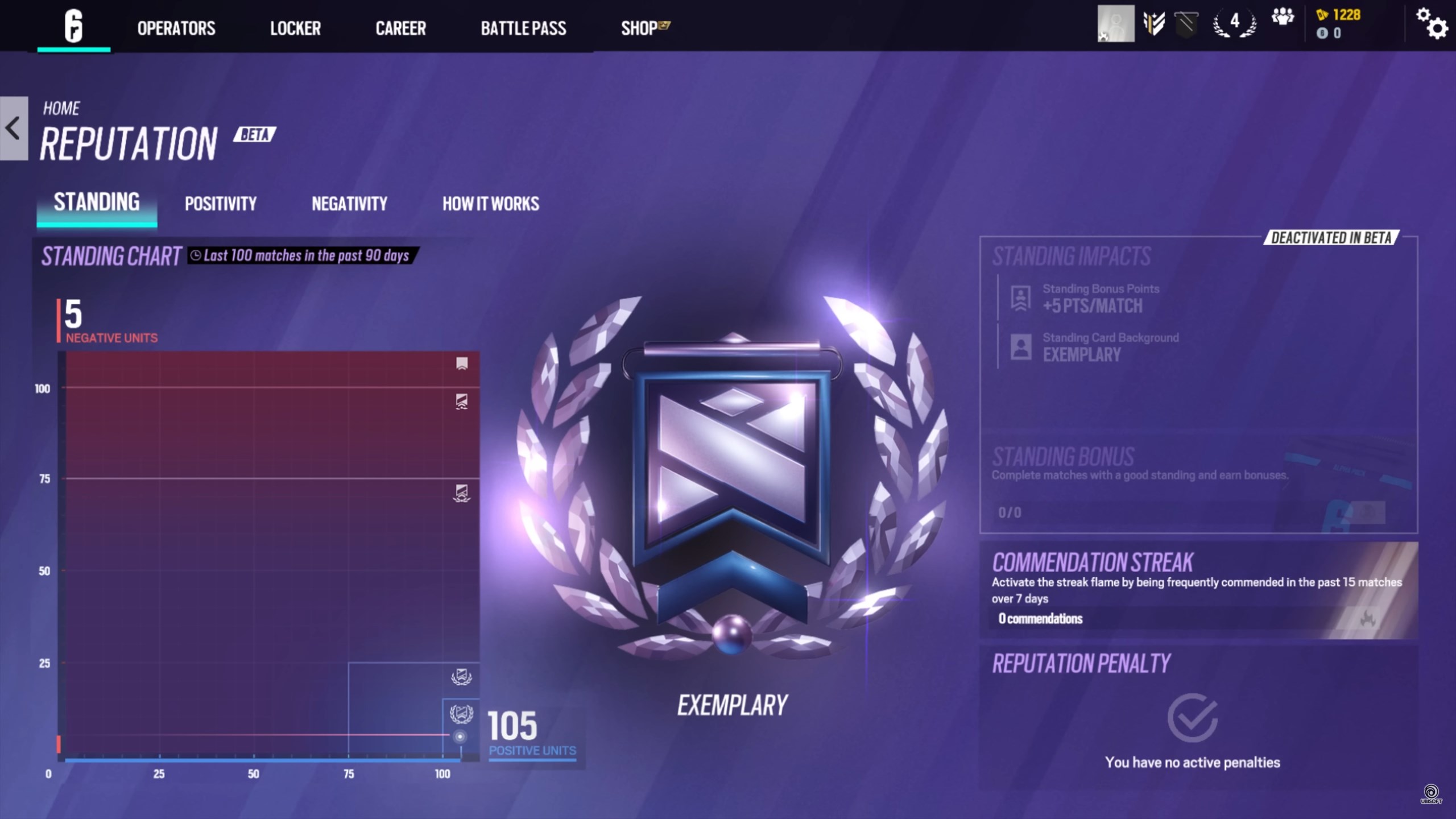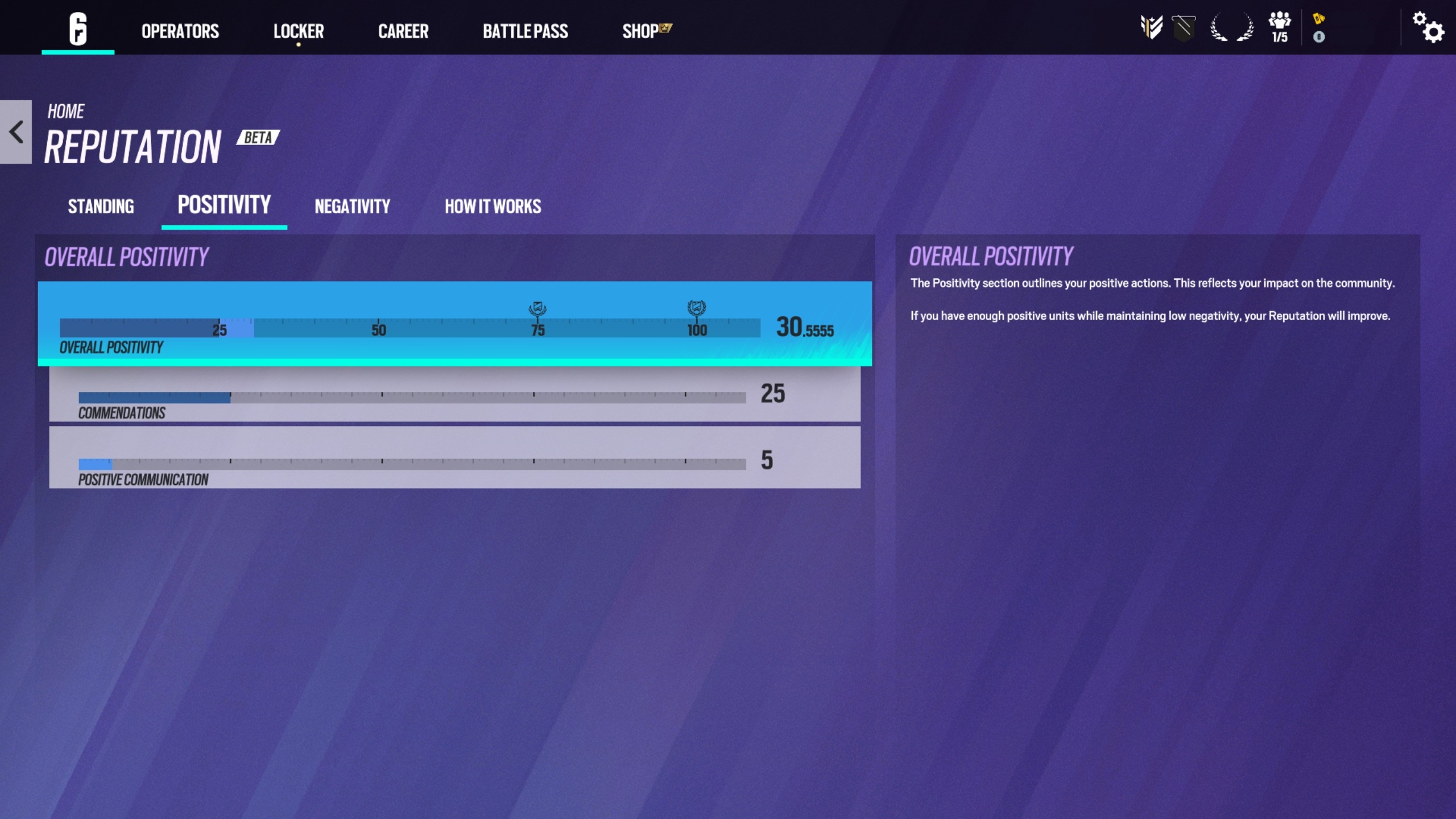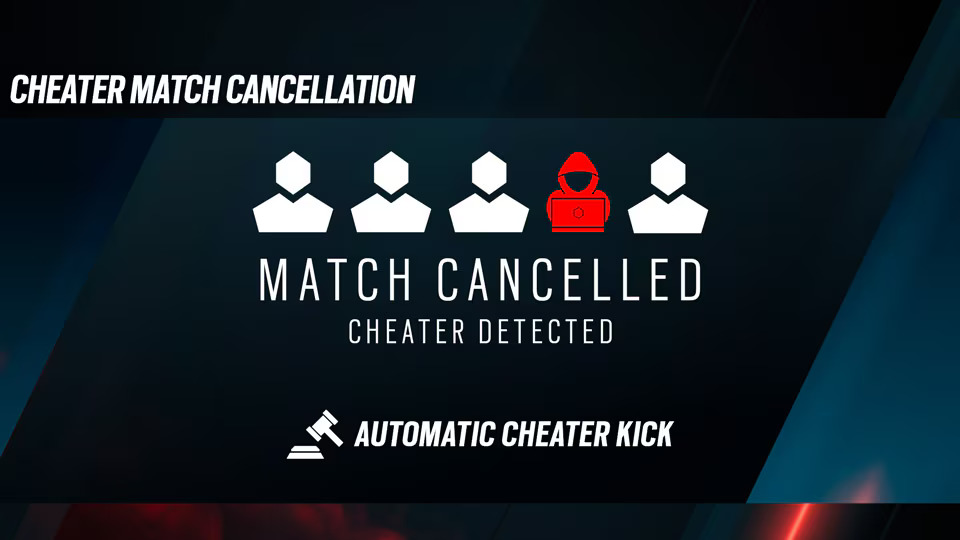Rainbow Six Siege is a elite, realistic, tactical First-Person Shooter that puts players in the role of attacking or defending operators with a focus on intense close-quarters combat, strategic team play, and explosive action. Since launching in 2015 more than 85 million player have engaged with the unique blend of teamwork, tactics, and precision. That Siege remains a standout within the multiplayer space is a testament to the dev team over the years.
A core pillar of that is a key focus on Player Protection. A longstanding popularity and a competitive spirit can unfortunately attract certain unsavoury types who would attempt to disrupt fair play, gain unfair advantages, behave in negative ways, and more. As such, my work on the game as a user experience designer has focused on securing a respectable playspace, creating opportunities for positive interactions, and defending against would-be agitators.
Below is a roughly chronological log of some of the features I’ve worked on.
Also note that with many player protection topics (especially anticheat ones), there is a lot of power in not saying anything. As such, many topics have been omitted.
Preemptive Reverse Friendly Fire
Killing an ally is a risk and an intention feature of a tactical shooter like Rainbow Six Siege. While it is never okay, we acknowledge that our players are humans and can make mistakes. So when does an accident turn into intentional disruptive behaviour and what can be done about it?
Preemptive Reverse Friendly Fire (PreRFF), is a system that keeps track of each players propensity for team kills over a period of time. If they exceed a carefully chosen threshold of [# of team kills] / [time period], a penalty will be applied to the offending player for a set number of matches that reflects all potential ally-to-ally damage back toward them. This protects other players and directly disincentives careless or intentionally disruptive play
Key Roles
- Systems Design
- UX Design
- Basic Numeric Analysis
Ranked Match Cancellation
Ranked matches in Siege are a 5v5 team affair. If a player drops out of a ranked game early in the match, the remaining 9 players could be stuck in an unfair and unfun match for another 20–40 minutes.
Ranked match cancellation offers players the ability to cancel a match with no penalty and hop back into a new match as soon as possible. The team who is missing a player is given the opportunity to vote to cancel or continue the match. The players in a match will know better than a system every could what is going on and how they want to proceed.
Note: the player who abandoned the match will receive a penalty
Key Roles
- Systems Redesign
- UX Design
MMR Rollback
Unfortunately, in any competition, there exist people who will try to obtain an unfair advantage. Online multiplayer games are no different. (Efforts against cheaters is a different topic). But if a match was affected by a cheater, what can we do to help make things right?
MMR Rollback is a system that adjusts players’ MMR (matchmaking rating) and reverts any lost ELO due to playing (and losing) against a cheater. This means players won’t be unfairly deranked because they lost against a team who had an unfair advantage. It helps ensure the competitive integrity of the game and fair matchmaking for everyone.
Key Roles
- Systems Redesign (including multiple incremental upgrades)
- UX Design
- Basic Numeric Analysis
- Heavy Coordination with Matchmaking and Playlist teams
Privacy Mode
All players have the right to feel secure when playing and may at times want to obfuscate identifying information that may compromise their gameplay experience.
Content Creators, players who don’t present as a “typical gamer”, or just anyone who just temporarily doesn’t want to be seen can take advantage of privacy mode options to obfuscate their identity and/or secure their matches.
Key Roles
- Systems Design support
- UX Design support
Commendations System
Positive play and interactions can be a big part of why players return to our games. But for a while, despite being team-based and having lots of synergies and interactions, Rainbow Six Siege lacked a feature that let players celebrate and acknowledge one another.
The commendation system allows players to recognize their teammates for aspects such as leadership, dedication, being fun to play with, helpfulness, and more. Teams can even commend one another, spreading the goodwill from the match. Commendations are not only a point of pride but come with benefits such as highlights in the UI, bonus drops, and positive units in the reputation system.
Key Roles
- Systems Design
- UX Design
- External User Research
- Numerical Analysis
Reputation System
Building on top of a lot of other ideas (and being built for a long time), a single match is (mostly) standalone in Siege. While some features are in place to protect players or analyze their behaviour between matches (e.g. PreRFF), we needed something more comprehensive to quarantine and correct bad behavior, celebrate good behavior, and create a better playspace.
The reputation system was designed to track players’ behaviour over a period of time—both good and bad, educate players on how to be better, incentivize positive play, penalize disruptive behaviour and more. It slowly rolled out over many updates.
Key Roles
- Systems Design
- UX Design (primary + support)
- Numerical Analysis
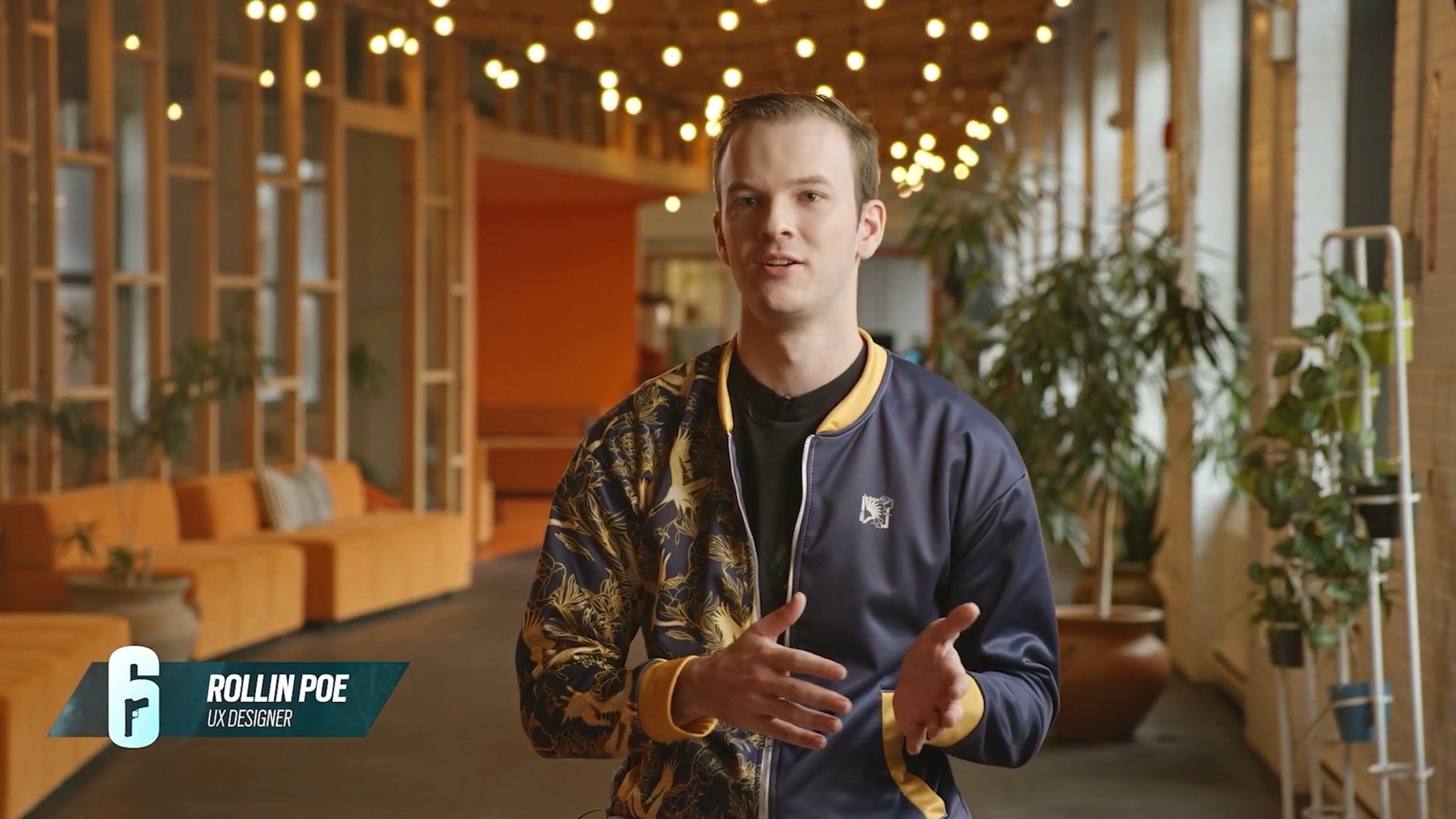
Mousetrap
Players on console use game controllers as their input method. Joystick aiming is less quick and precise than using a mouse and Rainbow Six Siege does not offer aim assist. When all players are using the same input method, then everyone is on equal footing. However, some players would seek to spoof their inputs, using unapproved third-party devices that let players use a mouse and keyboard as input, but convert it to gamepad input to gain an advantage.
Mousetrap is a world first system that detects this behavior in players and penalizes them. When a player is detected using mouse and keyboard in a controller pool, input latency (lag) was added to their inputs making it harder to aim and shoot, neutralizing any advantage those player were gaining.
Key Roles
- Systems Design
- UX Design
- Deep coordination with Playlist, Anticheat, and Data Science teams
Text Chat Moderation
Text chat is a vital tool that allows players to communicate with one another. Unfortunately, some players use it in… less that desirable ways. Hate speech, threats, illegal content and more has absolutely no place in Rainbow Six Siege
We introduced automated text chat moderation that analyzes every message sent, detects toxicity, and filters it depending on a set of rules. Neutral and positive messages pass through unabated. Disruptive messages are flagged for everyone and negatively impact the sender. Highly toxic ones are prevented from being sent in the first place.
Additionally, this system is used to automatically mute offenders both within a single match and across multiple matches if a pattern of toxicity is detected.
Key Roles
- Systems Design
- UX design (support + primary)
- Coordination with internal and external teams
Reputation Refresh
The initial launch of the reputation system in Rainbow Six Siege accomplished many of its goals, but it was clear that there was room for improvement. Accordingly, over the next year the system was entirely overhauled: updated backend, better tracking, new UI and player experience, clearer systems, and more.
The results were exactly what we hoped for. Players immediately found the new system more transparent, trustworthy, and under their own control. The visualization in the reputation center were highlighted as giving clear direction as the player progressed through the new system. Additionally, the distribution of player standings matched well with our forecasts, validating our process and balancing
Key Roles
- System Design/Redesign
- UX Design
- Deep coordination with Data, Online, and Arts teams, both assigned to the project and within the greater corporate structure.
Mousetrap Update
The launch of Mousetrap was monumental within the industry. It was an effective solution against this form of disruptive behaviour and the core ideas were quickly copied by many others. The fight against spoofers is a game of cat and mouse (pun intended), but one we were (and will continue to) win. Many incremental updates to our detection, penalization, and overall UX were released.
The next iteration of Mousetrap reworked the penalty system. Lag injection was an excellent deterrent and effective counter measure, but didn’t necessarily address the core issue: gamepad control vs mouse and keyboard. Coinciding with the launch of full console/PC crossplay, mousetrap was updated to force spoofers into the PC pool. The entirely neutralized the spoofers’ disruptive beahviour (they would now be playing MnK versus MnK) and cleaned and defended our console pools.
Key Roles
- Systems Redesign
- UX Design
- Coordination with Playlist, Anticheat, and Data Science teams
- Approval processes with 1st parties
Cheater Match Cancellation
Nobody likes playing with cheaters. But if one happens to slip into a match, and is pinged by our systems as a cheater to be banned, now what?
Cheaters detected and banned by the moderation team or automatic ban system are now immediately kicked from their ongoing match, and the match is canceled. We wanted to safegaurd the experience, and immediately remove cheaters wherever possible, getting fair players back into the action with no penalty to them (not even having someone lose time playing an unfair match)
Key Roles
- System Design/Redesign
- UX Design
- Coordination with Security Operations
Reputation Impacts
The reputation system underwent more updates (big and small, announced and unannounced) than are covered here. But from the earliest whispers on the wind for the system, there has been the intention for a players logn time behviour to have meaningful effects on their gameplay experience.
The launch of impacts represents a feature complete, out of beta Reputation System. (Though by no means means we’re not continuing to invest and improve the system.) Players with low standings see significant penalties to in-game earnings, access to certain playlists, rewards, and more. Conversely positive players have exclusive cosmetics and progress towards bonus drops.
Key Roles
- Systems Redesign
- UX Design
- Coordination with internal/external teams for Online, Arts, and Economy
